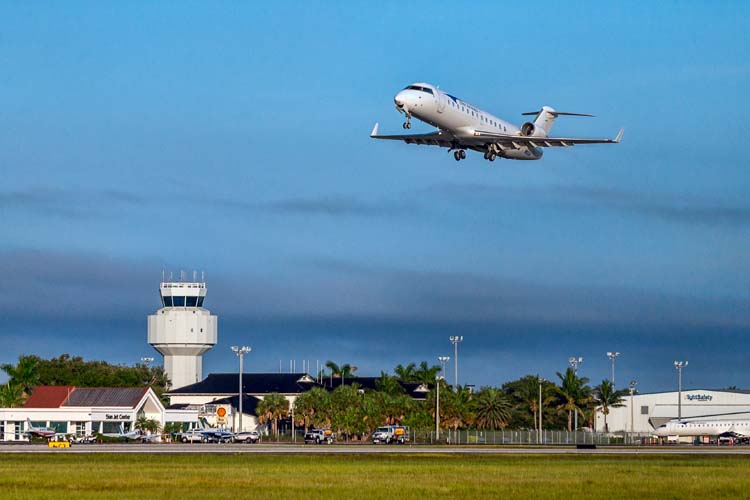
The Vero Beach Regional Airport currently has eight handicapped-accessible parking spaces outside its passenger terminal – one more than required by the federal Americans with Disabilities Act for the facility’s 238-vehicle lot capacity.
Only one of those spaces, however, is in the airport’s two long-term parking lots.
So, what happens when more than one driver with a handicapped-parking placard or disabled person license plate is traveling out of town, perhaps on an Elite Airways flight, and needs to park for more than the three hours allowed in the short-term lot?
“They can use the handicapped-parking spaces in the short-term lot,” said Todd Scher, the airport’s assistant director. “We don’t enforce the time limits on the handicapped spots. The time restrictions don’t apply there.”
Scher added: “That’s probably not clear to people.”
It wasn’t clear to Vero Beach Police Chief David Currey, who, when asked Sunday about the situation, admitted, “This is the first I’ve ever heard about or even been asked about it.”
In fact, it wasn’t until confronted with questions from Vero Beach 32963 last week that City Manager Jim O’Connor began exploring the possibility of installing signs to inform the airport’s visitors that the short-term lot’s three-hour time limit doesn’t apply to the handicapped-accessible parking spaces.
In a text message last weekend, O’Connor wrote that he “had not planned for more signs,” but that he “will look to see how many it will take.”
He said in an earlier conversation that disabled drivers whose vehicles display handicapped-parking placards or tags are “encouraged” to use the designated spaces in the airport’s short-term lot, which is noticeably closer to the terminal than the long-term lots.
O’Connor and Currey discussed the matter in a phone conversation Monday morning. Afterward, Currey confirmed that the city doesn’t enforce the time limit on handicapped-parking spaces – or on any vehicle displaying the proper placard or license plate in any public parking space.
That includes the two-hour parking limits on the spaces in downtown Vero Beach and the Central Beach business district.
“I can’t recall anyone coming in and saying they had parked in a regular spot with a handicapped-parking placard and got ticketed for being over time,” Currey said. “So, we’re not just allowing it at the airport. We’re doing this across the board.”
There are 52 spaces – including one handicapped-accessible spot – in Lot A, the long-term lot that, according to the airport’s website, allows parking for up to 14 days. There are 82 spaces and no handicapped-accessible spots in Lot B, were vehicles may park for up to 21 days.
The short-term lot has 97 regular parking spaces, plus seven handicapped-accessible spots, four of which are on the west side of the terminal. One is in front of the east side of the building.
The other two designated spaces are adjacent to the entrance for C.J. Cannon’s Restaurant.
The ADA requires one handicapped-accessible spot for every 25 parking spaces up to 100. The ratio then drops to one for every 50 – up to 200, when it decreases to one for every 100.
Thus, the Vero Beach airport, with its current parking capacity, is required to provide at least seven handicapped-accessible spaces.
“We try to accommodate all of our passengers, whether they’re disabled or not,” Scher said. “If someone physically can’t walk to the terminal from where they’re parked, we’ll make arrangements for them to park closer, if possible. Or, if it’s available, we’ve got a golf cart we can use to transport them to the building.
“We’ll do what we can to help.”
Before Elite returned commercial airline service to Vero Beach three years ago, there were no parking restrictions. Passengers were allowed to park in any space they could find.
Last year, though, the airport spent more than $180,000 to add a second long-term lot (Lot B) and, upon its completion, placed a three-hour limit in what is now the short-term lot.



